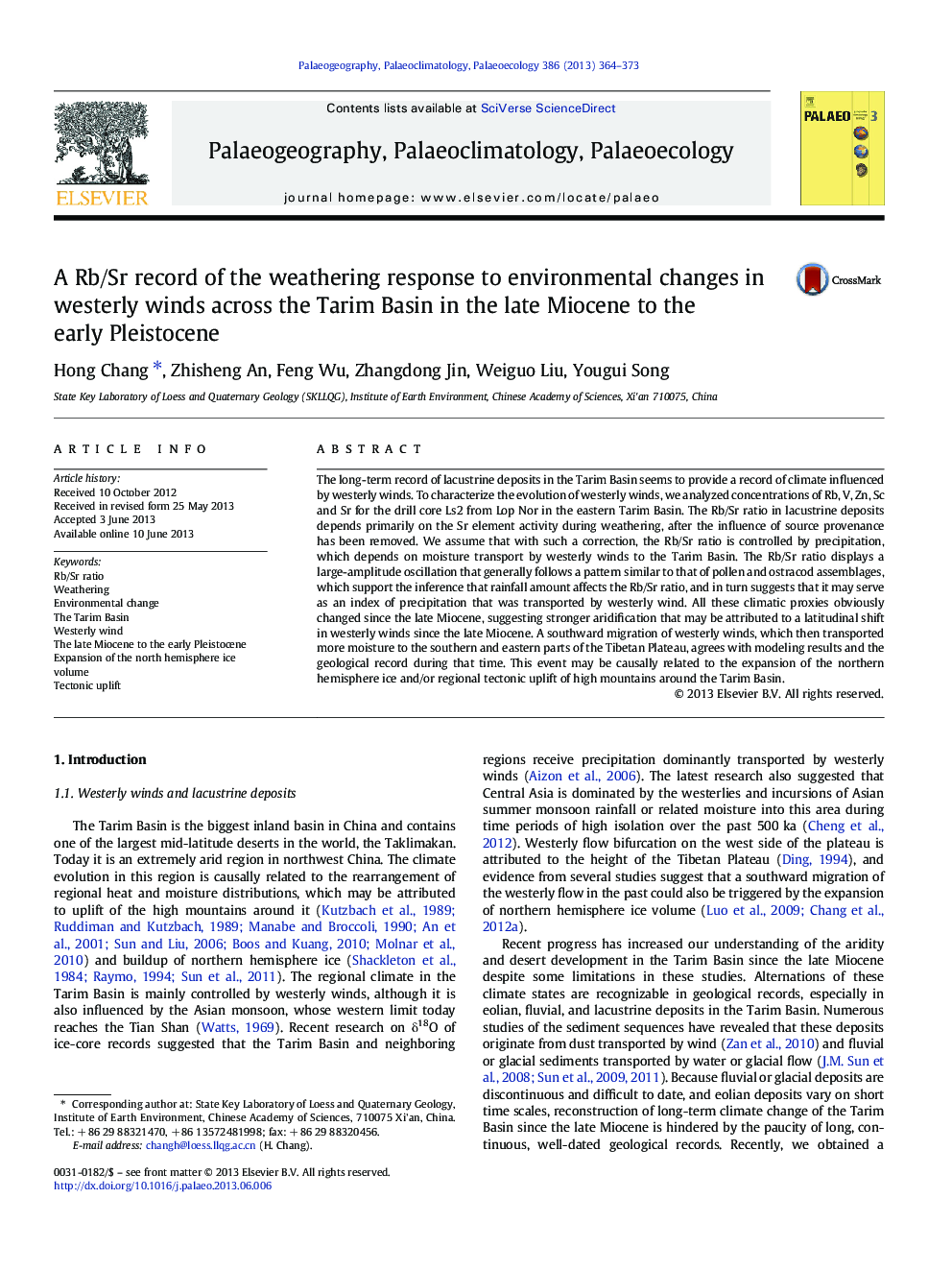| کد مقاله | کد نشریه | سال انتشار | مقاله انگلیسی | نسخه تمام متن |
|---|---|---|---|---|
| 6350327 | 1622203 | 2013 | 10 صفحه PDF | دانلود رایگان |

- Rb/Sr ratio for sediments from Tarim Basin rapidly changed in Miocene to Pliocene.
- Variation of Sr concentration controlled the Rb/Sr ratios during weathering process.
- Rb/Sr ratios suggest that aridification enhanced in Tarim Basin since late Miocene.
- Aridity is the prevailing climatic feature in this region since 5.1Â Ma.
- The climate changes since late Miocene are linked to global and regional factors.
The long-term record of lacustrine deposits in the Tarim Basin seems to provide a record of climate influenced by westerly winds. To characterize the evolution of westerly winds, we analyzed concentrations of Rb, V, Zn, Sc and Sr for the drill core Ls2 from Lop Nor in the eastern Tarim Basin. The Rb/Sr ratio in lacustrine deposits depends primarily on the Sr element activity during weathering, after the influence of source provenance has been removed. We assume that with such a correction, the Rb/Sr ratio is controlled by precipitation, which depends on moisture transport by westerly winds to the Tarim Basin. The Rb/Sr ratio displays a large-amplitude oscillation that generally follows a pattern similar to that of pollen and ostracod assemblages, which support the inference that rainfall amount affects the Rb/Sr ratio, and in turn suggests that it may serve as an index of precipitation that was transported by westerly wind. All these climatic proxies obviously changed since the late Miocene, suggesting stronger aridification that may be attributed to a latitudinal shift in westerly winds since the late Miocene. A southward migration of westerly winds, which then transported more moisture to the southern and eastern parts of the Tibetan Plateau, agrees with modeling results and the geological record during that time. This event may be causally related to the expansion of the northern hemisphere ice and/or regional tectonic uplift of high mountains around the Tarim Basin.
Journal: Palaeogeography, Palaeoclimatology, Palaeoecology - Volume 386, 15 September 2013, Pages 364-373